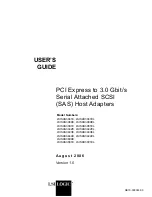
Intermec EasyCoder 501 – Service Manual Ed. 7
104
Chapter 13
13. Memory Card Adapter
13.1 Description
The memory card adapter is an optional device available for all
EasyCoder 501 models, either as a factory-installed option, or as a
kit for fi eld installation.
The memory card adapter allows the printer’s built-in memory to
be supplemented by various types of memory cards, see Chapter
13.3.
The Memory card adapter is interfaced to the general purpose
connector P-1 (marked “Memory Exp”) on the CPU board via a
Bus Driver board. The information stored in a non DOS-formatted
memory card is invariably treated as an expanded ROM by the
printer logic, even if a RAM-type card is used. DOS-formatted
memory cards can be both read from and written to, and are con-
sidered as a special device ("card1:").
When a data address is present on the buffers IC-3 to IC-5, data
from the card is subsequently received through the bidirectional
buffers IC-1and IC-2, see circuit diagram 1-971706-26 later in this
chapter.
The purpose of signal ENIO is to address the immediate data,
while signal RD' transfers the same data on D0–D15 from the
memory card to the multiplexed address/data bus AD0–AD15 of
the CPU board.
It is possible to read a byte (8 bits) or a word (16 bits), the
choice being made by means of signal CSLOW active, and signals
CSLOW and CSHIGH both active.
In case the memory card is of non DOS-formatted RAM-type, the
write protect switch on the card must be enabled thus activating
signal WP (P-2:pin 33 and IC-7:pin 23).
When signal REG (P-2:pin 31 and IC-7:pin 19) goes low, it is pos-
sible to read an internal buffer in the memory card, called attribute
memory, which contains information on the type of card inserted
(PROM/RAM) as well as on the actual memory size of the card.
Circuit IC-7, GAL20V8, is a programmable address decoding cir-
cuit.
















































